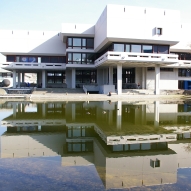Zusammenfassung
Luminol is a major probe for chemiluminescence (CL) and electrochemiluminescence (ECL) detection technologies in (bio)analysis. Surfactants are added to ECL assay cocktails to enhance signals or are present, owing to given bioassay protocols, yet little is known regarding their effects on luminol ECL. In-depth understanding is provided here through a broad study with bioanalytically relevant ...
Zusammenfassung
Luminol is a major probe for chemiluminescence (CL) and electrochemiluminescence (ECL) detection technologies in (bio)analysis. Surfactants are added to ECL assay cocktails to enhance signals or are present, owing to given bioassay protocols, yet little is known regarding their effects on luminol ECL. In-depth understanding is provided here through a broad study with bioanalytically relevant surfactants (cationic, anionic, and nonionic), four common electrode materials, and two luminol derivatives. Naturally, in ECL, surface effects are dominant; however, bulk solution, diffusion, and luminescence-stabilization processes also contribute significantly to the overall reaction. It was found that in contrast to CL the effect surfactants have on luminol ECL cannot be linked to general surfactant characteristics such as ionic nature, hydrophilic lipophilic balance (HLB) value, and critical micellar concentration (CMC). Instead, surfactants act in an all-encompassing mechanism, including surface electrochemistry, their solution and interfacial phases, and the chemical luminescence pathway. This leads to dramatic differences in signals obtained, ranging from 5-fold increases to total quenching. Within this complexity, we defined six guiding principles that are extrapolated from the underlying mechanisms and selection guides for surfactant, electrode, and environmental condition combinations. Those will now assist in developing highly sensitive luminol-ECL-based bioassays, because the surfactant selection can be based not only on properties needed for the assay protocol but also on identifying the optimal electrode-surfactant pair to maximize detection efficiency.






 Altmetric
Altmetric